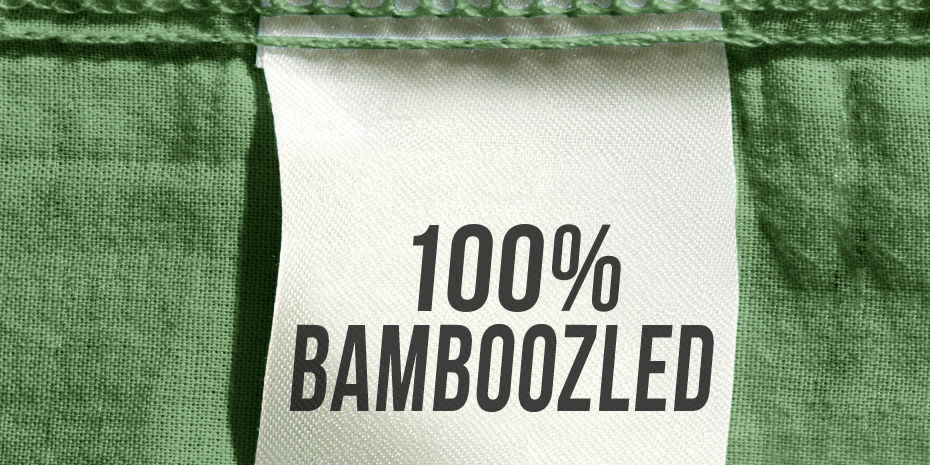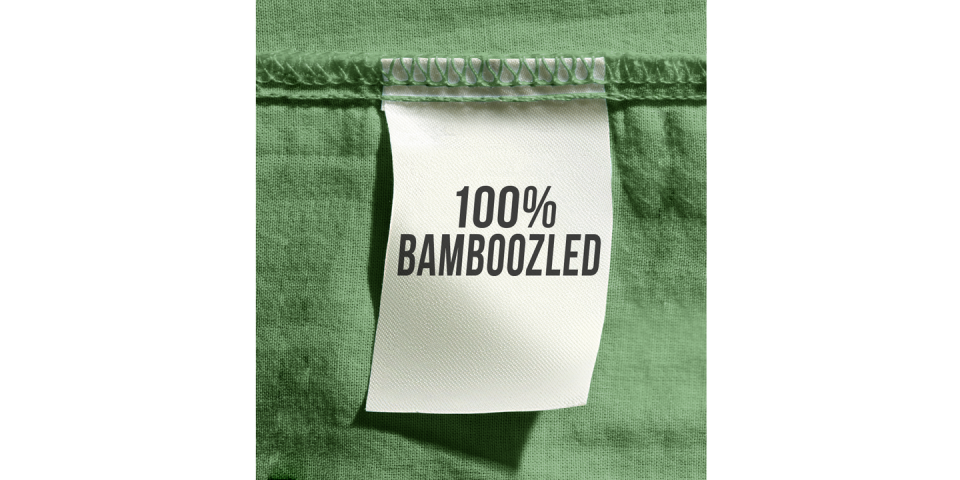PSA: There's No Bamboo in Your Bamboo Bedding


Recently, the scientists in the GH Textiles Lab noticed an alarming trend: A growing number of bedding and clothing brands were claiming that their products were made of bamboo, eucalyptus or other tree fibers — and consumers seemed interested, based on the growth in online searches. From their experience, our experts knew these products couldn’t contain any trace of the plants promoted in the claims, so after thorough research we selected a wide assortment of items for additional analysis. Here are the details and the results of the investigation:
How We Tested
Our scientists zeroed in on over 50 products clearly marketed as being made of bamboo, eucalyptus or beechwood fibers, including clothing, footwear and bedding. We bought 10 of them, reviewed their labels and sent them to an outside lab for fiber-identification testing. The result: For all 10 items, the lab could not detect any trace of the claimed plants or trees in the final fabric.
What Are the Products Actually Made Of?
All 10 products we tested contained rayon. Rayon is the umbrella term for fibers manufactured from plant cellulose. Types of rayon include viscose, lyocell and modal. While they are similar, “they vary based on the manufacturing steps,” explains Lexie Sachs, GH Institute textiles director and head fiber scientist. It can be confusing because the process of making fabric from bamboo, eucalyptus or another tree does start with the plant. “But the raw plant materials are chemically dissolved to the point that they no longer exist in the final fabric,” says Sachs. “All that’s left is cellulose, which is then processed with more chemicals and turned into fibers.” In other words, the products are derived from bamboo or trees, but not made of them.
How Is Cotton Different?
Cotton grows as a fiber, whereas plants like bamboo and eucalyptus grow as tough stalks and tree wood. When cotton gets processed to make a finished fabric, the fiber isn’t chemically changed and its overall structure remains the same. So when a lab examines cotton from sheets or clothing under a microscope, the original cotton fiber is still visible.
How Plants Become Rayon
A chemical heavy process removes all trace of the original substance
What the Law Says
The Federal Trade Commission (FTC) requires brands to use the manufactured name for rayon fibers such as viscose and lyocell. It does allow brands to reference the raw material if it is included along with the generic name — e.g., “viscose from bamboo” — but companies are skipping this qualifier in product names and marketing.
Some brands list the accurate name in fine print or on a garment’s label, but that’s not enough to comply with regulations. A statement for businesses on the FTC website explains: “If it’s not made directly of bamboo fiber, don’t call it bamboo. Not anywhere, not any way.” In the same statement, the FTC points out: “Some companies seem to think that if they modify their content disclosures to accurately read ‘rayon,’ they’re free to use the word ‘bamboo’ in product titles and descriptions. That’s a mistake.”
The FTC provides a concise “How to Avoid Bamboozling Your Customers” guide on its website to prevent brands from making this kind of error. It has sued some companies for false bamboo labeling, but this has only scratched the surface; it hasn’t yet sued regarding false claims involving fibers from trees like eucalyptus and beechwood.
Why It’s a Problem
Describing a product’s fiber with a plant name instead of the correct term can mislead shoppers in a variety of ways, including:
Greenwashing
This tactic overstates a product’s eco-friendly qualities to drive sales. Bamboo rayon may not be as “green” as you think: Harsh chemicals are often used to make it. Lyocell is considered a better option than viscose because the solvent used to make it is less toxic and can be reused.
Besides the environmental impact from chemicals in the production process, fabrics derived from trees may contribute to deforestation if they're not properly sourced. When you shop, you can check whether companies comply with FSC or PEFC standards to ensure the trees are coming from sustainably managed forests.
Deception
“Bamboo,” “eucalyptus” or “beechwood” may sound more luxurious and special than rayon, leading consumers to purchase a product for the wrong reasons.
False Promises
Brands sometimes highlight properties of the plant or tree in their marketing, as in saying bamboo is naturally antimicrobial. When the plant gets chemically dissolved, it loses all trace of those characteristics. Anil N. Netravali, Ph.D., a professor of fiber science and apparel design at Cornell University, explains that regardless of the plant used at the start, “the purified pulp contains mostly cellulose. All the other chemicals, such as antimicrobials in bamboo, are removed.”
FTC attorney Miriam Lederer tells Good Housekeeping that consumers should be able to see clearly that a product has attributes of rayon instead of the raw material. She says having the fiber name in certain places may not be enough, “because consumers might make their purchase decisions before seeing the full and accurate fiber-content disclosure.”
The Reason It’s Everywhere
With the rise of start-ups and direct-to-consumer brands, bedding and apparel companies are often run by entrepreneurs instead of people with backgrounds in textiles. “It’s possible that brands don’t even realize they’re making a mistake because suppliers provide them with information that’s either inaccurate or misinterpreted,” says Sachs. While the brands do a great job marketing and getting on consumers’ radar, they may have less understanding of how the product is made and how to follow U.S. regulations.
Our Lab pros also spoke with textile experts from SGS, a leading worldwide provider of testing and other validation services. They agreed that marketers could be misled by suppliers about fiber content and product specifications, and they urged brands to verify all claims before relaying them to consumers. Most important, “Claims must be substantiated by technical documents to prove they’re true, accurate, relevant and verifiable,” says Min Zhu, Ph.D., technical director for softlines at SGS North America.
Even when suppliers provide accurate information, it can easily be distorted. “Robust storytelling and the disconnect between designer and marketing can lead to incorrect labeling and communications,” says Tricia Carey, director of global business development at Lenzing, a popular fiber manufacturer. “We see more emerging brands that need education on product labeling.”
How Brands Responded
We reached out to all 10 companies to let them know about our findings and to learn about their validation processes. Within days, six brands took steps toward fixing the mistakes, such as adding “viscose” or “lyocell” to their website descriptions and changing product names. Several claimed they’d had no idea the original plants weren’t in the fabrics and said they hadn’t tested their products themselves. Some said they knew the plant was only the raw material but didn’t realize they weren’t allowed to refer to the fabric using a plant name. Two brands did not respond.
Where We Found Claims
These examples show common places to spot mislabeled rayon fibers, along with specific instances from items we tested. We asked these brands to share how they validate the marketing claims and whether they had considered FTC regulations.



Easy Ways to Shop Smarter
Keep an eye out for specific fiber names instead of unsubstantiated eco claims. For a legitimately sustainable option, look for Lenzing fibers, such as its Tencel-branded lyocell. It’s sourced from responsibly managed forests and made via a greener process with safer chemicals and less waste. If brands use it, it’s often listed on their websites and labels.
GH Lab–Approved Picks
If you’re looking for soft, sustainably made rayon options, you can trust that these products use responsibly sourced Tencel fibers without going overboard on their claims.
Bottom Line
The fact that these products are mislabeled doesn’t mean they’re low quality. In fact, several of our top-tested products contain rayon. Just be wary of plant-content claims.
You Might Also Like


